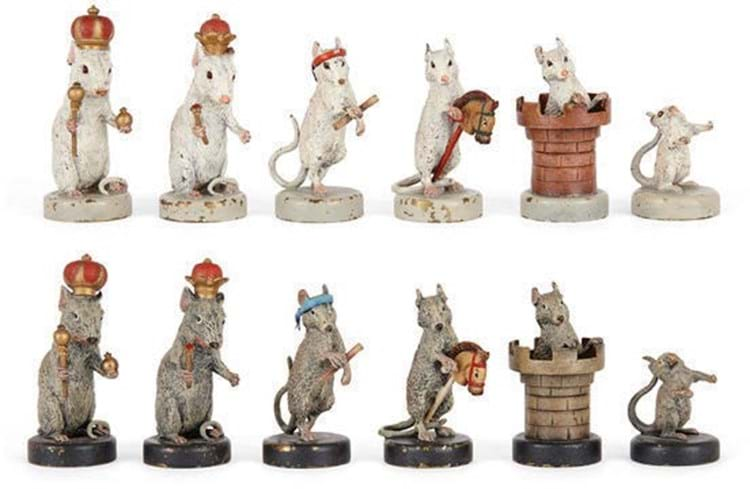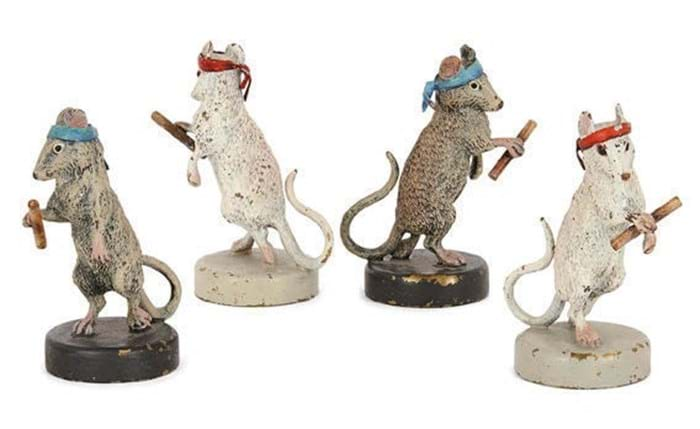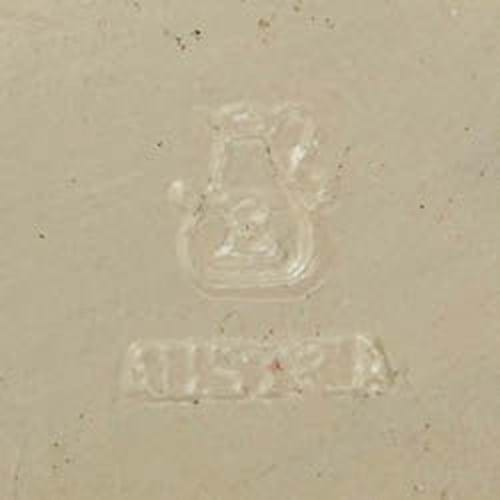
Franz Bergman (1861-1936), the son of a Bohemian metalworker, opened a foundry in his hometown of Vienna in 1900.
The foundry specialised in cold-painted bronzes, made by applying several layers of paint to the bronze after firing to make fashionable collectors’ items.
Bergman specialised in three main forms: Orientalist sculptures, erotic Art Nouveau figures and whimsical animals.
This full 32-piece bronze chess set belongs firmly in the third camp. Each piece is modelled as a grey or a white mouse. Pieces include mice emerging from castles representing rooks as well as those with headbands and batons representing bishops, known as ‘runners’ in German.

Four of the Bergman chess figures.
The largest figures measure 2¾in (7cm) tall, while the smallest are about 1½in (3.5cm) and the majority are marked to the underside for the Bergman foundry with a B inside a vase and stamped Vienna.
Many of Bergman’s humorous animalia have been documented in books such as Joseph Zobel’s Antique Vienna Bronzes. However, there are no other chessmen known from the foundry, making this set rare and possibly a one-off commission.

A mark for the Bergman foundry in Austria.
Likely to appeal to both chess and Bergman bronze collectors, the set is offered for £32,000 by Mayfair Gallery, which offers a wide range of 18th and 19th century antiques and works of art.














